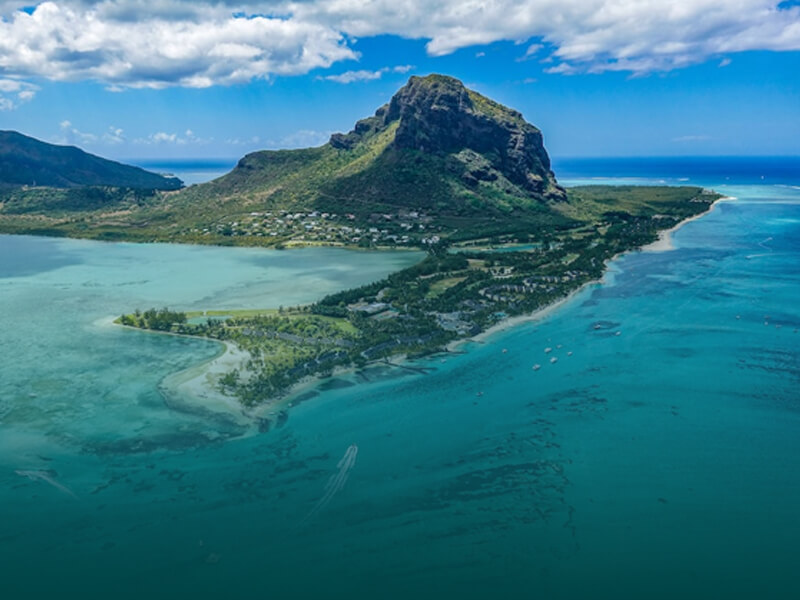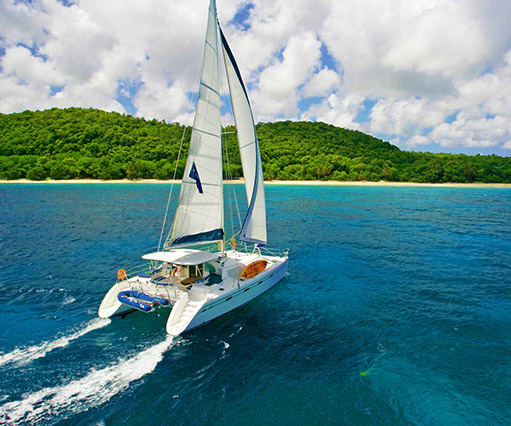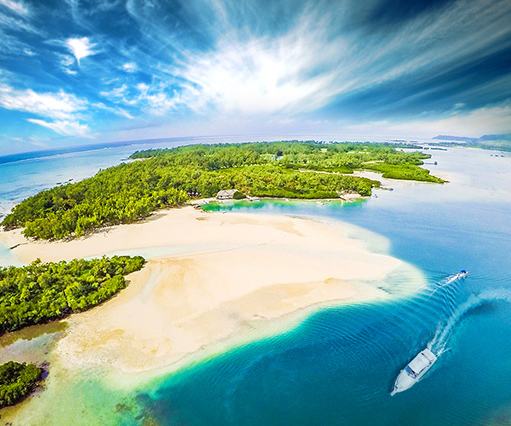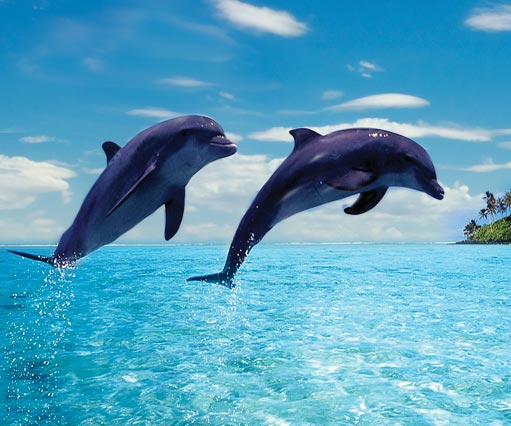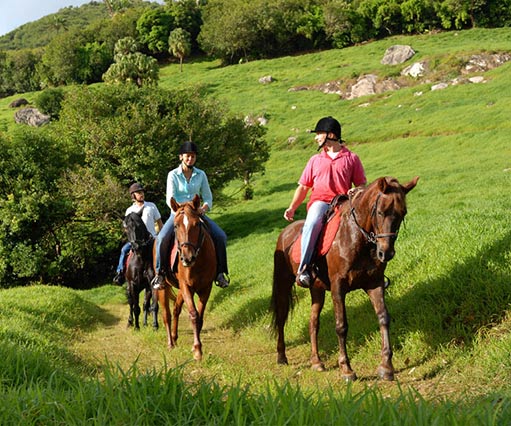Ce contenu n'est pas disponible en français
Guide des Musées Les Plus Fascinants de l'île Maurice
Museums are a great way to learn about a country when you are travelling and there are several spectacular museums on the island that have become major tourist attractions.
The island of Mauritius has a rich culture, which is due to its diverse population originating from Europe, Africa, and Asia. One of the ways that visiting tourists can witness the cultural heritage of the island is through its museums.
The museums serve as chroniclers of the landmark events that constitute the island’s history and enable an ordinary person to travel back in time and relive those moments.
By visiting these museums, you are not only to learn more about the Mauritian way of life but also learn more about the fauna and flora of the country.
Many travellers always want to know what they are going to discover when visiting a museum so here is a quick rundown of several of the more important museums in Mauritius.
1. The Sugar Museum (L'Aventure du Sucre)
Once lusted after as much as gold, sugar has enjoyed an extraordinary existence, leaving a profound impression on the history and identity of Mauritius.
Located in the north part of the island, the old Beau Plan sugar mill has a trail that will tell you over 250 years of history of the whole island.
The adventure starts behind the facade of the factory building, with tales woven around the life story of sugar, which for a long period of time has been the main product of Mauritius.
You will then visit the enormous factory, its decade-old machines decked with a thousand lights. A sugarcane hedge leads the way to the fully restored and converted sugar factory where films evoking the early years of Mauritius appear on giant screens.
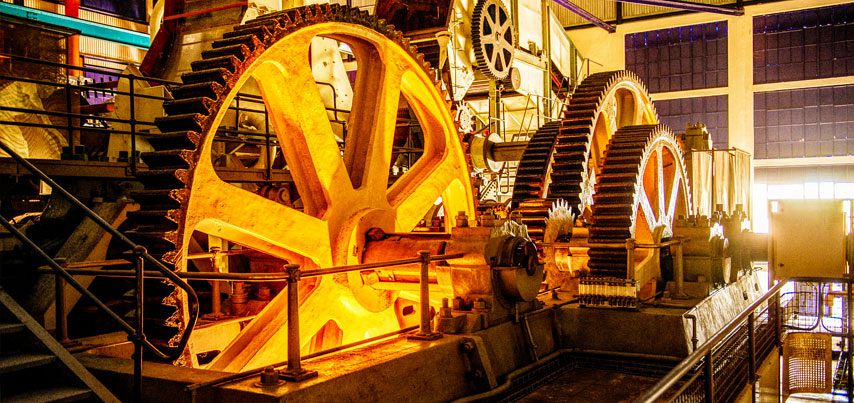
The factory was used until the 1970s to transport sacks of sugar in the port. Today you can see how the docks used to be in those times and discover their importance to Mauritius.
The Sugar Adventure is suitable for all ages and it has been conceived to be of interest to both international visitors, as well as for locals.
The tour of the old sugar mill, which has been transformed into a modern museum, lasts about 1 and a half hours. At the end of the tour, delightful sugar and rum tastings await the visitors. The museum can be visited as a sole activity or as part of packages.
Book your visit to The Sugar Museum and Factory through the following packages:
- Visit To The Sugar Museum And Factory
- Mauritius North Tour (Private Tour)
- Underwater Walk–North Tour–Port Louis-Shopping-1 Day Package
2. Mauritius Postal Museum
The Mauritius Postal Museum is located in one of the oldest historical buildings in Port Louis. The construction of this iconic building started back in 1865 and was inaugurated in 1868. Nowadays, the postal museum building is a testament of the efforts done to enhance communication both locally and internationally.
One important advancement in the postal services was the introduction of a prepaid postage system using stamps.
On 20 September 1847 the first adhesive stamps, the Blue and the Red Penny were created and printed for the first time by Joseph Osborn Barnard. Mauritius became the fifth country in the world, after Great Britain (1840), Brazil and Switzerland (1843), and North America (1847), and the first colony to print stamps.
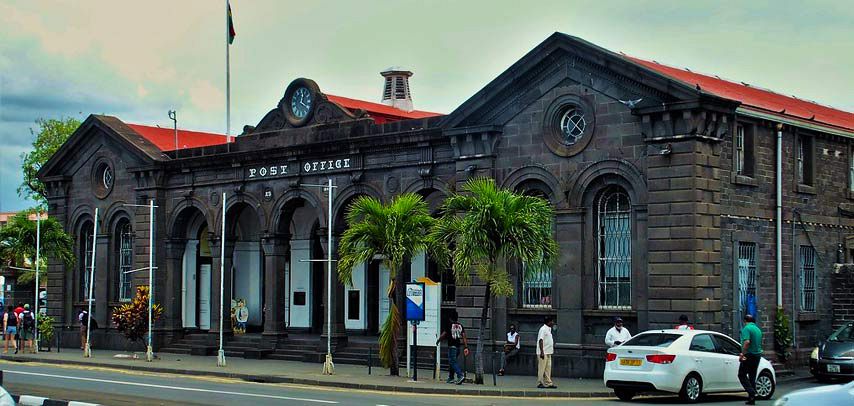
It houses objects related to the postal history and visitors will also see photographs of old post offices and mail vehicles of the island as well as various philatelic paraphernalia dating back to the mid 19th century.
Those wishing to purchase souvenirs and stamps may do so at the gift shop; Also the ideal place for tourists to buy postcards and stamps with local sceneries or characteristics and send them back home. It’s a landmark building that must be visited while taking one of the tours that include the capital Port Louis.
3. National History Museum
Located in Port-Louis, the National History Museum provides an overview of Mauritius' history & colonisation by the Portuguese starting from the 16th century, the Dutch, the French, and finally by the British in the 19th century. The Museum has been created in a 17th-century French house, which in itself is a national monument. The museum has a wide variety of ancient artefacts relating to the Dodo, ancient maps of Mauritius, and coins among others. Recently few new items were introduced to the museum including a train carriage and a replica of Napoleon’s boat which was used in one of his historic battles which he won against the English. The museum is on 2 floors and both contain a wide variety of displays.
The first floor features the Dutch, French, and Anglo-French wars sections. You will also be able to view some old maps of the Indian Ocean as well as of Mauritius created by the Dutch. You will also be able to see some rare blue and white Chinese porcelains that originated from the Ming Dynasty (Wan Li 1575 - 1620), oil coins made of gold and silver, and many other items collected from a pirate shipwreck that took place at Grand River South East on 07th January 1702.
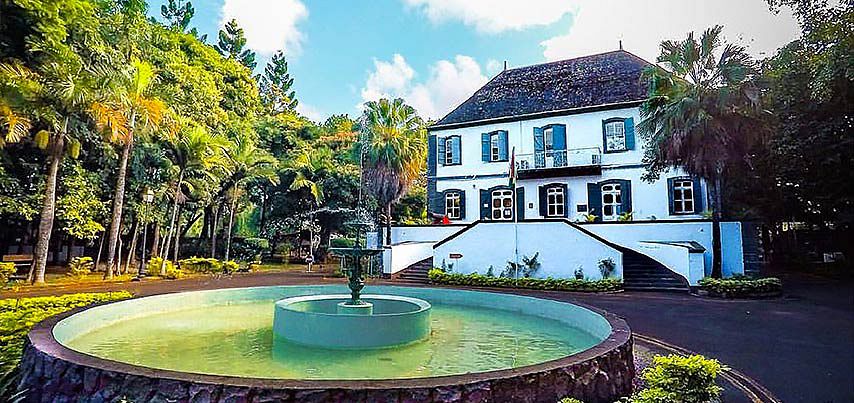
Another room displays the French era and here you will be able to view ancient maps (Abbé de Lacaille 1753, Bellin 1763), paintings of prominent French officials, and even the bed of Mahé de Labourdonnais, the French Governor who was ruling over Mauritius and Reunion Island. You will have the chance to see the famous bronze bell from the shipwreck of the Saint-Géran in 1744 and colourful illustrations on the story of Paul & Virginie. The third room focuses on the struggle between the French and the British to control the Indian Ocean.
On the second floor, there is a permanent gallery on the British period of Mauritius (from 1810 up to the end of the 19th century). It tells the story of the transformation of the seaport economy into a land-based agricultural economy, mainly the sugar industry. It also gives a brief on inter alia, the slave trade and slavery, indentured labor, Indian immigration, and the general arrival of other cultures in Mauritius.
4. Bois Cheri Tea Museum & Factory
If you love tea and nature, this is one of those tours you should not miss. The plantation is just a short distance from the museum and the main factory. It is located in a scenic natural setting with the surroundings of lush greenery. The background brings some quiet relaxation and peace of mind.
The museum is small but you will find lots of information on Mauritian tea history, the production, and the display of some older machines used earlier for tea production. Some of the machinery you will be shown includes an old locomotive train. Before Mauritius gained independence, the British were moving goods and passengers around using rails. After Mauritius got its independence in 1968, the founders of Bois Cheri bought the F4268 locomotive which is now used as a boiler. The Mauritian tea story is told using wall sketches.
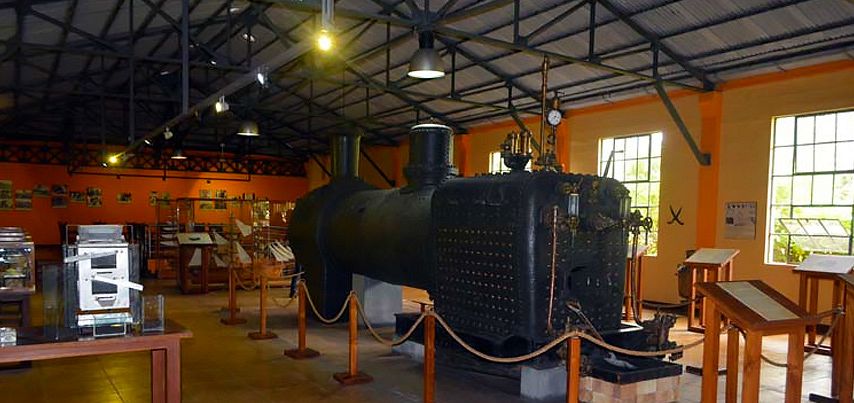
After a walk around the museum and the factory, you can go for tea tasting. Nowadays Bois Chéri produces a new range of flavoured teas, green teas, and herbal teas. You may taste them during your visit while enjoying a great panoramic view of the beautiful south of the island.
Book your visit to the Bois Cheri Tea Museum & Factory through the following packages:
5. Blue Penny Museum
The Blue Penny Museum is an art and history museum located in the capital, Port Louis, within Le Caudan Waterfront shopping complex. Constructed in 2001, the museum comprises five rooms designed with incredible attention to quality which is obvious from the works on display and the detailed descriptions accompanying them.
You can discover the history of the three different colonial periods that the island experienced, witness Port Louis in the 18th and 19th centuries, and the history of postal services, with the very first postage stamps to be issued in Mauritius. The tour of the museum ends with the beautiful yet tragic story of a mythical couple, Paul and Virginie. It is a fantastic place to view statues, vintage coins, and stamps related to Mauritius including the orange-red one penny as well as additional art exhibits from local artists.
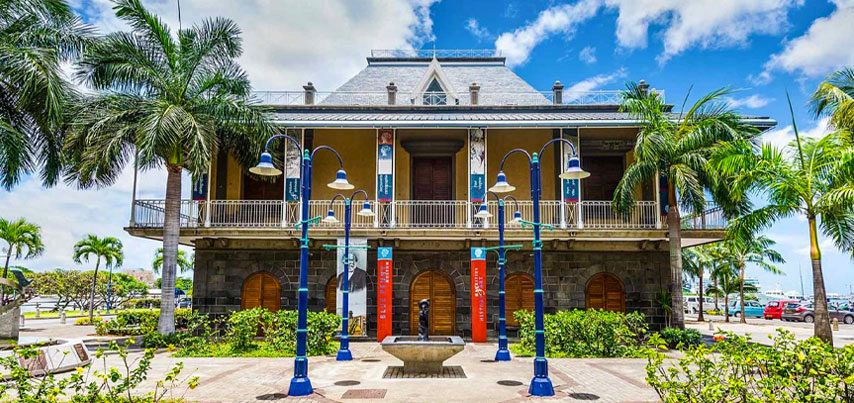
It takes around 45 minutes to an hour to do a complete tour of the museum. There is also an option for 'Privilege Visit' which includes a cocktail reception and tailored guided tours adapted to the visitor's needs. History fanatics can choose the 'Expert Visit' option for a guided in-depth tour focusing on specific parts of the exhibits.
The best way to discover this museum is by taking one of the packages that include a tour of the capital.
6. Photography Museum
The Mauritius Photography Museum is located opposite the theatre of Port-Louis at La rue du Vieux Conseil and it’s a haven for camera lovers. It is a private museum that exhibits a number of artefacts and documents about Mauritian photography and the early days of cinematography.
Among the objects that you will find are old cameras and lenses, old books about photography, some of the first daguerreotype pictures on metal or on ceramic, projection equipment, printing equipment, and old stereoscopic pictures, among other things.
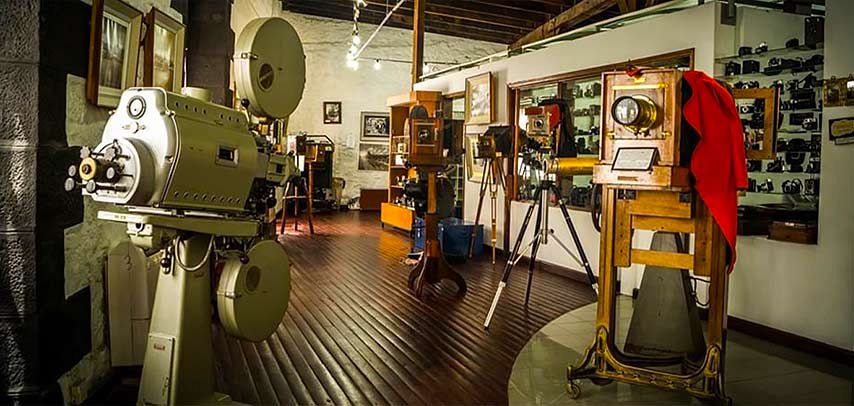
Chronologically the development of technology and photography in Mauritius is shown. It starts with one of the first photos ever taken in Mauritius in 1840 followed by the viewing of immense cameras that were used 150 years ago and lastly cameras that are similar to today's analog cameras.
Furthermore, you can see historical cinema projectors and printing machines used for the first newspaper of the southern hemisphere printed in Mauritius in 1773. There is also a camera that was used in 1860 to take photographs of Indian workers embarking on the island. In the centre of the exhibition hall is a shelf stacked with all kinds of books about photography.
7. The Natural History Museum of Port-Louis
Located near the gardens of the East India Company, the Natural History Museum of Port-Louis exhibits some of the impressive fauna of Mauritius and nearby islands.There are more than 3,000 historic specimens on display. These creatures lived on land, in the ocean, or in the skies and they are of all shapes and sizes.
Only three galleries remain out of the original four. On display, you can find various bird species originating from the nearby region and some other animals which are now extinct e.g Giant Mauritian Lizard, considered the largest lizard in the world, and of course the famous Dodo, Mauritius’ national symbol. You will have the opportunity to view some videos about the excavations of Dodo bones, some of which are also exhibited at the gallery. You will have the opportunity to view a skeleton of the national bird of Rodrigues, The Solitaire, which like the Dodo disappeared at the end of the 18th century.
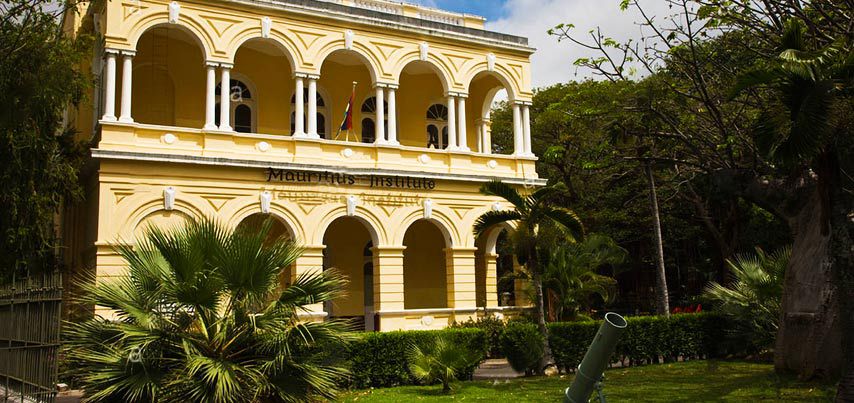
Another gallery is dedicated to marine life and species. There you will see an impressive collection of seashells, including the giant clamshell which weighs about 70 kilograms. You will see many fish species and some massive models of sharks.
8. Mahebourg National History Museum (Historical Naval Museum)
Located in the southeast of Mauritius, the National History Museum of Mahébourg, is housed in Château Gheude, a national heritage building dating back to 1772. It showcases a number of naval artefacts and the maritime history of Mauritius such as sea battles and shipwrecks.
The Naval Museum of Mauritius contains the reminiscences of the French colonial empire and the replicas of the ancillary that were used in the historical battle. The interesting aspects of the Naval Museum of Mahebourg lie not solely in its collection of exhibits, but also in its history as a building. It is worthwhile to see both the exterior of the building and the different exhibitions.
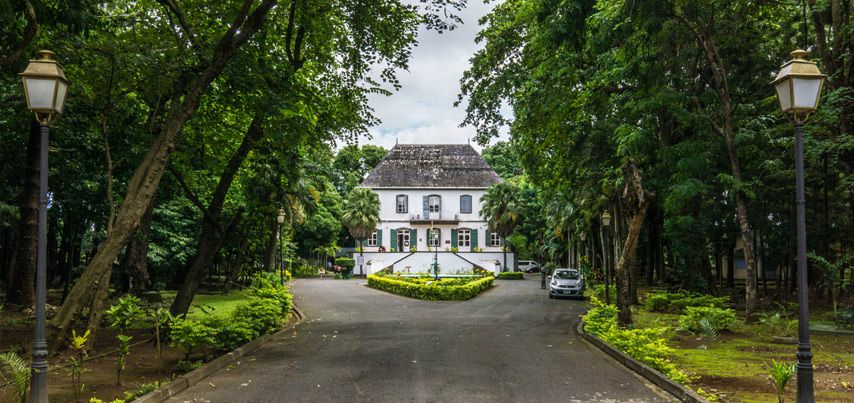
Built around 1772, the Chateau de Robillard or Gheude Castle is beautifully nestled on the bank of La Chaux River where you can find a luxuriant park of gorgeous tall pine trees. This French colonial mansion was home to the Robillard family, notably the Commandant Jean de Robillard of the district of Grand Port. The mansion was eventually bought in 1950 and turned into a museum under the Mauritius Museum Council.
The Museum consists of three floors, two of which are accessible to the public. There are various sections where you can learn about the different colonisation periods of Mauritius including the remnants of the great Naval Battle of Vieux Grand Port. In addition, you will also get to see exquisite artefacts of many other shipwrecks such as Pieter Both (the first Governor-General of the Dutch East Indies). Some bones of an extinct species of Giant Tortoise and of the Dodo are displayed at the museum. These bones bear testimony to their existence until some few hundred years back
This museum can be visited as a sole activity or part of a package.
9. Aapravasi Ghat - UNESCO World Heritage Centre
Located in the north at Trou Fanfaron, next to the port enclosure, Aapravasi Ghat is one of two Mauritian sites to be listed as a UNESCO World Heritage Site. Originally called Coolie Ghat or Immigration Square, it was in 2001 that the site was named Aapravasi Ghat - which in Sanskrit means "shore/immigration depot". Due to its geographical position, Mauritius has been, for a long time, the hub of global immigration to the other colonies.
In the initial stage of the visit, the archaeological remains, and the dynamic presentations of the centre allow a comprehensive understanding of the site and its heritage. Shore of a new land and a new destiny, Aapravasi Ghat remains above all a place celebrating the memory of our ancestors and those who shaped our society.
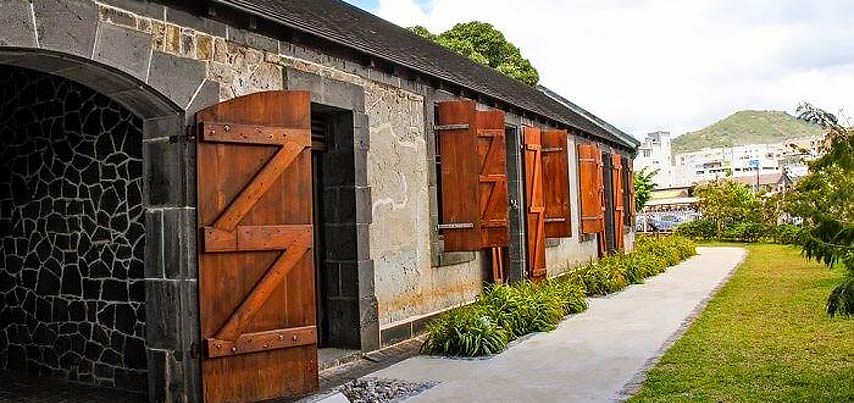
Less than half of what was once Immigration Square remains; the most symbolic elements of the structure have nevertheless been preserved, such as accommodation, the old hospital, but above all the 14 steps that all immigrants had to climb when they disembarked on the island. Documents attesting to the passage of immigrants, identification photos, origin, place of birth, caste, length of the contract, salary, accommodation, and other information were kept for a while. It was following Cyclone Carol in 1960 that the archives were transferred. They are now under the responsibility of the Mahatma Gandhi Institute in Moka.
Visit the Aapravasi Ghat - UNESCO World Heritage Centre
10. Eureka House
Eureka House is a unique Creole house built in 1830 and is located by the river of Moka. It is an elegant Creole residence originally owned by British and French aristocrats in the 19th century. It is reputed to be one of the largest houses on the island, with 109 doors and windows.
The visit to the Eureka Mansion and its grounds provides an intriguing glimpse into colonial life. The house is filled with antiques and it has a magnificent garden surrounded by waterfalls of the Moka River.
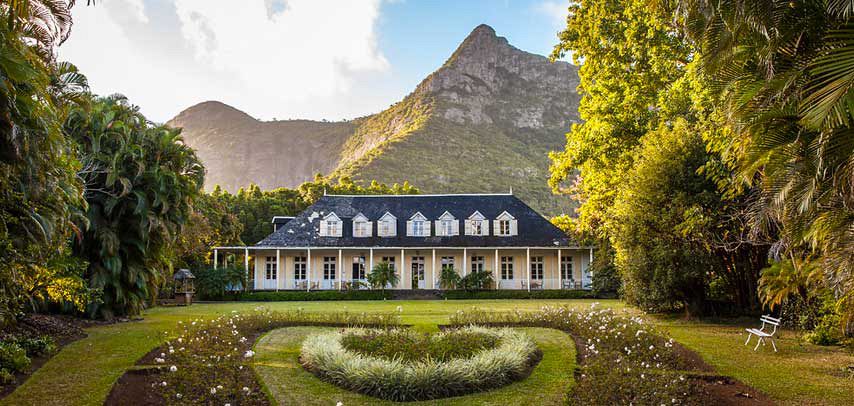
The Eureka house was restored and opened to the public as a museum in 1986. The house is constructed largely of wood and surrounded by a long, shady veranda. The extensive grounds consist of a curious mix of natural Mauritian plant life, including mango trees and palms, a waterfall, and an English-style garden.
The museum has areas that are dedicated to music, art, antique maps, Chinese and Indian housewares, and quirky contraptions like a colonial-era shower. You will have a tour of the house and its beautiful gardens.
You may visit the Eureka House through the following packages:
A visit at one of the museums guarantees that you will have fun while unveiling all the secrets of Mauritius through an interactive and informative journey in the past. At a few of the museums, there are food outlets available which make it perfect for a fun family excursion.
Tailor Made - Mauritius Museum Tour:
You may also create your own Tailor Made Tour and visit any of the museums of your choice by using this link














